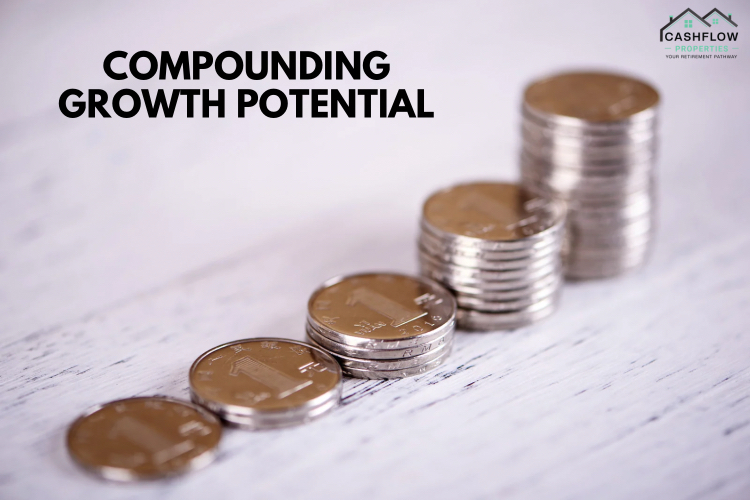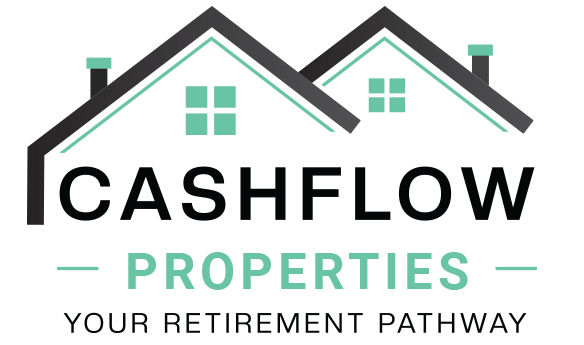
When people think about property investment in Australia, the common belief is that buying a million-dollar home automatically means higher returns. After all, if both a $500,000 and a $1 million property grow by 10%, the dollar gain on the higher-valued property is obviously greater. But smart investing is rarely about just the size of the gain. It is about how much risk, capital, and holding power you need to get there.
In an evolving market where affordability, borrowing capacity, and rental demand play pivotal roles, understanding how a $500K property performs compared to a $1M one can help investors make far more strategic choices.
1. The $500K Property: The Accessible Growth Path
A $500,000 property is often considered the sweet spot for many investors, especially those starting out or seeking sustainable portfolio growth.
Lower Entry Point, Easier Financing
At this price point, you need a 20% deposit of $100,000. This is far more achievable for most Australians compared to the $200,000 needed for a $1 million property. It also keeps borrowing levels manageable, leaving room for additional investments in the future.
According to the Australian Bureau of Statistics (ABS), the average household income in 2024 was around $98,000 annually. With responsible lending rules in place, many Australians would find it far easier to secure finance for a $500K property without stretching their serviceability limits.
Stronger Rental Demand
Mid-range and affordable housing markets typically experience stronger rental demand because they appeal to a broader tenant base. Data from CoreLogic’s 2025 Rental Market Report indicates that rental vacancy rates in suburbs with median house prices between $400K–$600K are below 1.5%, reflecting tight competition among tenants.
Lower rent levels make such properties easier to lease, reducing vacancy periods and providing consistent cash flow. A $500K property might rent for around $500–$550 per week, which covers a good portion of the mortgage and helps maintain positive or neutral cash flow.
Steady Growth with Lower Risk
Now, let’s talk growth. If a $500K property grows at an average rate of 10% annually, that’s a $50,000 gain per year. While the dollar figure seems smaller compared to a $1M property, the return relative to the investment size is identical. What matters more is the scalability.
With the same $1M capital, an investor could buy two $500K properties. If each property grows by 10%, the combined gain is $100,000 — the same as owning a single $1M property but with reduced concentration risk.
2. The $1M Property: Bigger Gains, Bigger Risks
On paper, the allure of a million-dollar home is undeniable. Prestige, prime location, and higher rental yields in certain markets make them appealing. However, these properties come with greater responsibility and risk.
Higher Capital Requirement
A 20% deposit on a $1 million property equals $200,000. For most investors, that’s a substantial sum that could otherwise fund multiple smaller investments. Add to that stamp duty, legal fees, and potential renovation costs, and the total outlay quickly climbs beyond $220,000.
Furthermore, servicing a $800,000 loan significantly impacts your borrowing capacity. Many lenders will view this as a high-risk commitment, limiting your ability to expand your portfolio in the near future.
Smaller Tenant Pool and Greater Volatility
A higher-end property typically attracts tenants with greater financial capacity, but this also means a smaller tenant pool. In the event of a vacancy, it might take longer to secure new tenants, leading to extended periods without rental income.
Moreover, tenants in this price bracket tend to be more selective, expecting premium fittings, modern finishes, and prime locations. Meeting these expectations requires higher ongoing maintenance costs.
Higher Risk Exposure
If a job loss or financial emergency occurs, the repayment burden on a million-dollar property can quickly become overwhelming. In uncertain economic conditions, higher-value homes tend to experience sharper price corrections. CoreLogic data from 2023–24 showed that premium suburbs across Sydney and Melbourne saw price drops of up to 8% during market adjustments, while affordable regions fell by only 2–3%.
Bigger Growth in Dollar Terms, Not Necessarily in Outcome
Assume a 10% annual growth. That’s a $100,000 gain per year, twice the dollar amount of the $500K property. But remember, you’ve also invested twice the capital. The percentage return remains the same, yet your risk exposure and holding costs are significantly higher.
3. The Power of Diversification: Two $500K Properties vs One $1M Property
Now let’s compare two realistic scenarios:
• Scenario A: You invest in one $1M property with a $200K deposit.
• Scenario B: You invest in two $500K properties, each with a $100K deposit.
Both portfolios are worth $1M in total value, but the outcomes differ substantially.
Diversification Reduces Risk
Owning two properties across different suburbs, cities, or even states allows you to spread your exposure. If one area underperforms or experiences high vacancy, the other can still deliver stable returns. This risk distribution is crucial in Australia’s property market, where growth cycles vary by region.
For example, according to CoreLogic’s 2024 Home Value Index, Brisbane and Perth recorded annual growth rates above 13%, while Sydney and Melbourne saw more modest growth of 5–6%. An investor with properties in both tiers could balance returns effectively.
Compounding Growth Potential

With two properties growing at 10% annually, your combined portfolio grows by $100,000 in value each year, just like the single $1M property. However, compounding effects can play out faster when reinvesting equity from smaller properties.
After the first growth cycle, each $500K property becomes $550K. The equity gain of $50K per property can be leveraged for another purchase. Over time, this cycle builds momentum — allowing investors to scale their portfolios faster than someone holding one expensive property.
Greater Holding Power
Two affordable properties mean lower individual repayments and better rental coverage. This provides higher financial resilience. You are less likely to sell under pressure if market conditions change or interest rates rise.
According to the Reserve Bank of Australia (RBA), variable mortgage rates in mid-2025 averaged 6.35%. At this rate, holding smaller, well-rented properties becomes far easier than managing a large loan on a luxury asset.
4. Long-Term Perspective: Building Wealth with Strategy
Smart property investing is not about chasing prestige but about achieving sustainable growth and financial freedom. A diversified portfolio of affordable properties can outperform a single high-value asset in terms of compounding, flexibility, and overall wealth creation.
Easier to Exit or Rebalance
Selling one $500K property is far easier and less disruptive than liquidating a $1M asset. You can partially exit the market while maintaining exposure through other holdings, giving you more control over your portfolio.
Broader Market Participation
Lower-value properties often exist in growth corridors where infrastructure development, population expansion, and affordability trends drive consistent capital appreciation. Government data from Infrastructure Australia shows that regions like South East Queensland, Western Sydney, and Greater Perth are among the fastest-growing corridors through 2030.
By participating in these markets early, investors can benefit from both capital gains and rental growth over the long term.
Conclusion: Smarter Growth is Not Always Bigger
In property investment, a higher price tag does not automatically translate to better growth outcomes. While both $500K and $1M properties can grow at the same rate, the journey, risk exposure, and scalability differ significantly.
A $500K property requires less capital, offers easier financing, attracts a wider tenant base, and enables diversification. Two $500K properties growing at 10% each deliver the same overall gain as one $1M property, but with less risk and greater flexibility.
Ultimately, the smartest investors in the Australian real estate market are not those who buy the most expensive homes, but those who build portfolios strategically, leveraging diversification, compounding growth, and long-term stability.

